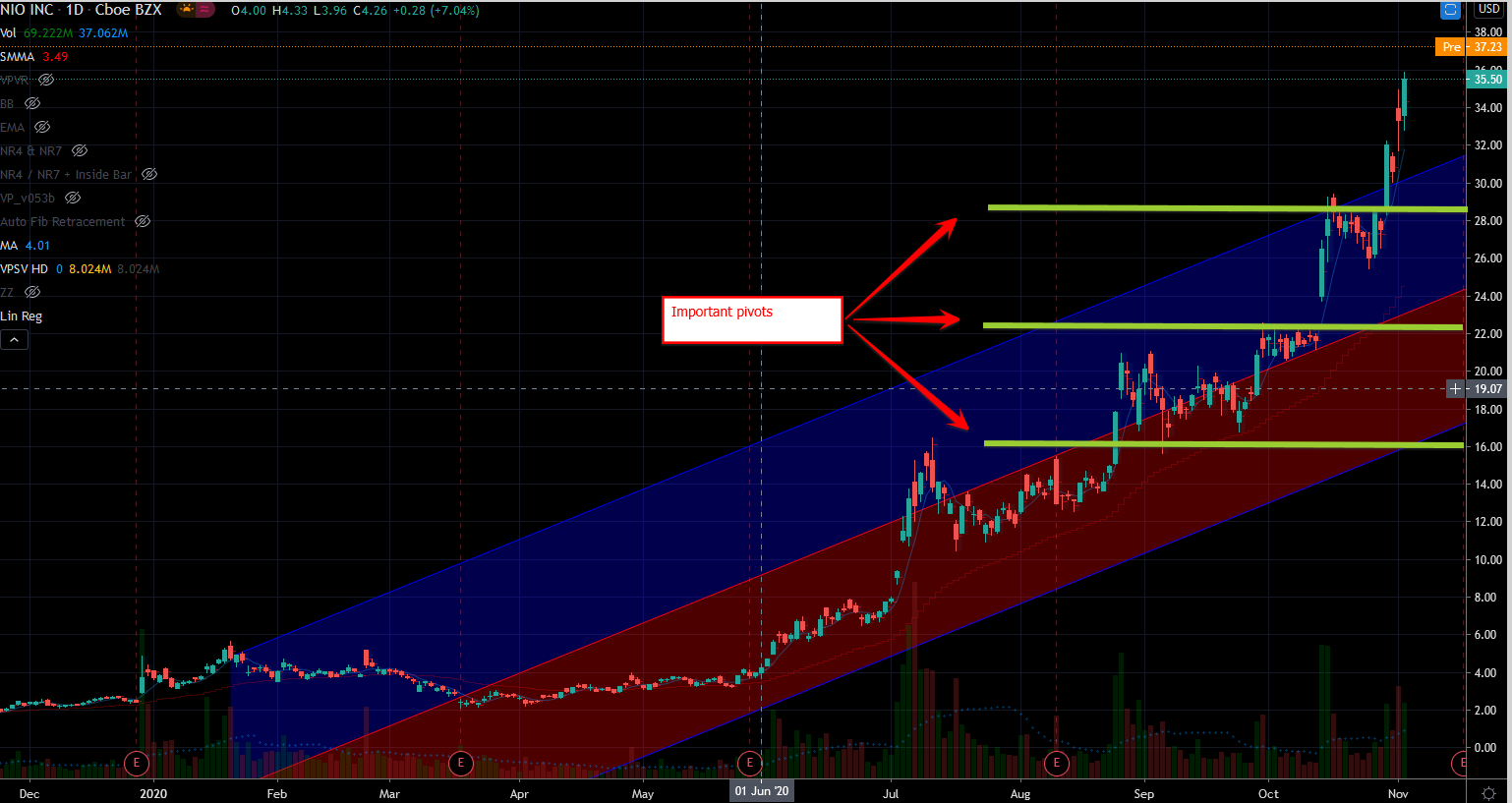In the ever-evolving world of financial markets, option trading has emerged as a captivating strategy, offering investors the potential to enhance their returns and hedge against risks. Within this realm, NIO, a leading electric vehicle manufacturer, has garnered significant attention among traders seeking to harness the power of options. This article delves into the intricate world of option trading with NIO, illuminating its nuances and empowering investors to make informed decisions.

Image: www.tradingview.com
Option trading involves the buying or selling of contracts that give the holder the right, but not the obligation, to buy (in the case of a call option) or sell (in the case of a put option) an underlying asset, such as a stock, at a specific price (the strike price) on or before a specified date (the expiration date). NIO’s compelling growth trajectory and high-volume trading activity make it an attractive choice for option traders.
Basics of Option Trading with NIO
Let’s demystify the fundamentals of option trading using NIO as an example. Suppose NIO’s stock is currently trading at $20 per share. A trader who believes the stock price will rise may purchase a call option with a strike price of $22.50 expiring in 60 days. This contract gives the trader the right to buy 100 shares of NIO at $22.50 at any time up until the expiration date. If the stock price rises above $22.50 during this period, the trader can exercise the option to buy the shares and potentially profit from the price increase.
Alternatively, if the stock price falls below $22.50, the option expires worthless, and the trader loses the premium (the price paid to acquire the option). It’s crucial to emphasize that option trading involves both potential profits and risks, and traders should carefully evaluate their risk tolerance before venturing into this arena.
Decoding Option Premiums
Understanding option premiums is vital for successful option trading. The premium is the price you pay to acquire an option contract, and it is influenced by various factors, including the underlying asset’s price, the option’s strike price and expiration date, and the prevailing market volatility.
In the NIO example, the premium for the call option with a strike price of $22.50 and a 60-day expiration might be $1.50. This means the trader pays $150 (1.50 x 100) to acquire the option contract. If the stock price rises to $24 per share and the trader exercises the option, they will profit $150 on the transaction, excluding commissions and fees.
Advanced Strategies for NIO Option Trading
The realm of option trading extends beyond basic call and put options, encompassing a myriad of sophisticated strategies that allow traders to tailor their approach to suit their investment goals. These strategies often involve combining multiple options to create complex positions that enable traders to manage risk, speculate on price movements, and generate income.
Spreads, for instance, are popular strategies that involve buying and selling options of the same type (call or put) but with different strike prices. Traders construct spreads to reduce the overall cost of the option position or to achieve specific profit or risk management objectives.

Image: investorplace.com
Real-World Examples of NIO Options Trading
To further illustrate the application of option trading in NIO, let’s consider the following examples:
Bullish Call Option: A trader anticipates a surge in the price of NIO shares. They purchase a call option with a strike price of $25 and an expiration date three months from now. If NIO’s stock price rises to $28, the trader can exercise the option and buy 100 shares at $25, resulting in a potential profit.
Bearish Put Option: Conversely, a trader believes NIO’s stock price will decline. They buy a put option with a strike price of $18 and an expiration date two months from now. If NIO’s stock price falls to $15, the trader can exercise the option and sell 100 shares at $18, generating a potential profit.
Option Trading Nio
https://youtube.com/watch?v=anMui68Eejs
Conclusion
Option trading in NIO provides investors with a compelling opportunity to enhance their returns and manage risks. By understanding the intricacies of option pricing, strategies, and real-world applications, traders can navigate the complexities of this dynamic market and harness its potential. As with any investment, thorough research, careful consideration, and a comprehensive understanding of the risks involved are paramount.






